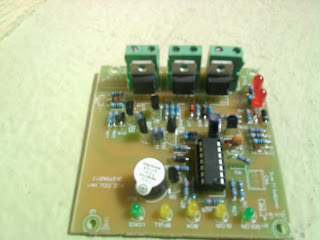SOLAR CHARGE CONTROLLERS regulate the amount of charging and discharging of the battery.
They prevent and protect the battery from over charging and/or excessive discharge.
Our controllers are built with best materials which results in outstanding performance.
The life span of our solar charge controllers is also very long.
These utilize latest technology ensuring very less self-consumption power.
FEATURES OF ZERO DROP SOLAR CHARGER FOR HF SINE WAVE INVERTER
Zero Drop solar charger with maximum current Up to 40 Amps.
Automatic and manual inbuilt mains charger disable and enable.
PWM Charging algorithm with CC and CV
Auto Temperature Compensated charging voltage
low Self consumption
Safe for Continuously connected battery
Common-Ground for Solar Panel, Battery and Load
LED Indications for charging and battery status

efficiency:approx.97%
Character display indicating solar charger ON, Charger OFF
Compact and rugged enclosure
Protections:
Over load protection
Battery reverse protection
Load short circuit protection
Battery Overcharge / Deep Discharge protection
Indications:
solar on/off
Charging on/ off
Battery Low cut off
Battery High cut off
battery voltage,current, voltage,current.
Load ON, Over load
mains on and mains off.
This technology cost with BOM and schematics, software,Gerber files.
contact +91-9581457196.
They prevent and protect the battery from over charging and/or excessive discharge.
Our controllers are built with best materials which results in outstanding performance.
The life span of our solar charge controllers is also very long.
These utilize latest technology ensuring very less self-consumption power.
FEATURES OF ZERO DROP SOLAR CHARGER FOR HF SINE WAVE INVERTER
 |
| ZERO DROP SOALR CHARGER |
Automatic and manual inbuilt mains charger disable and enable.
PWM Charging algorithm with CC and CV
Auto Temperature Compensated charging voltage
low Self consumption
Safe for Continuously connected battery
Common-Ground for Solar Panel, Battery and Load
LED Indications for charging and battery status

efficiency:approx.97%
Character display indicating solar charger ON, Charger OFF
Compact and rugged enclosure
Protections:
Over load protection
Battery reverse protection
Load short circuit protection
Battery Overcharge / Deep Discharge protection
Indications:
solar on/off
Charging on/ off
Battery Low cut off
Battery High cut off
battery voltage,current, voltage,current.
Load ON, Over load
mains on and mains off.
This technology cost with BOM and schematics, software,Gerber files.
contact +91-9581457196.




















